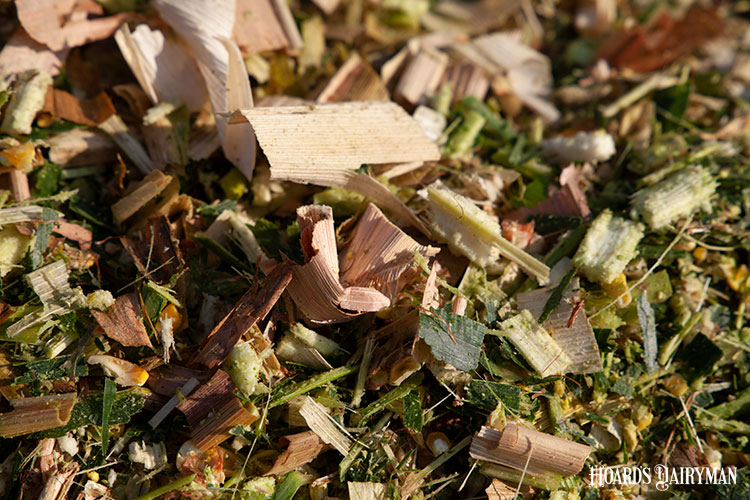
I really like the concept and the term “Christmas corn silage.” The term’s thought and its message communicate the concept spot on. Corn silage needs some time in the pit to not only ferment, but for the starch to become more available in the cow. Meanwhile, other silage crops like alfalfa and grass species have only the fermentation process hurdle to cross. Since corn silage can be as much as 50% corn grain, we must think about the time in the pit and how that impacts the starch availability in the diet.
While this is the best-case scenario, this optimum approach may at times be impossible in the real world. What should we do then?
There are a number of reasons why you may have to, in reality, feed corn silage before you want to. Among these are:
- Acquiring a new farm with different inventories
- An error in inventory math
- Unexpected levels of high shrink
- Crop challenges like droughty weather
At some point, nearly everyone will have to feed corn silage that is more like “Halloween corn silage” or maybe even “Labor Day corn silage.” And in extreme cases, the question will come from a client, “We just closed the pit. How soon can we feed it?” When this question comes, it must be followed with, “Let’s discuss the strategy.”
Starch is expensive
A gross measure of all of this is fecal starch. Measuring fecal starch has made a comeback recently, and I do think it is a useful tool to help us think about our efficiency of starch utilization. Starch is expensive. Leaving it in the manure is obviously an economic loss. Fecal starch, however, doesn’t tell the whole story.
When we think about starch, it is intuitive to think about energy supply. Things like milk flow and body condition come to mind when considering how starch actually helps the cow. The unexpected thing, though, is that it also has a big impact on the protein side of the diet and helping to support high levels of milk protein. This “side hustle” for an energy nutrient like starch is the strong support for microbial protein production in the rumen. As this starch is fermented, serving as a major energy supplier to the cow, the microbial process of this fermentation is also driving up the overall microbial mass in the rumen.
There are zillions of “bugs” in the rumen. A well-balanced ration high in starch can make it even more zillions! In an attempt to be very general by using words like zillions and bugs, the point is clear. Well fermented starch in the rumen not only supplies a lot of energy to the cow, but it also creates a lot of protein for the animal to support more milk, higher milk protein, and also support so many body functions dependent on the amino acids in microbial protein. Well fermented starch from corn silage usually doesn’t come from corn silage that had to be fed sooner than desired.
Short time silage
In the event that corn silage is opened soon after the fermentations is complete, but well before the starch is truly ready for game-time, there are a few things that can be done to help. In general, these all relate to providing more quickly fermented carbohydrates in the diet.
As an example, if ground corn is the normal processing choice for a dairy, when feeding just-fermented corn silage, making that ground corn finer with smaller screen can help. Or, to make a better correction, move some or all of the ground corn to flaked corn. Nice, low bushel weight flaked corn has a faster starch fermentation rate than ground corn.
Similarly, moving starch processed, dry-shelled corn to sugar in molasses or even whey can help a lot. A less desirable way to accomplish this is to simply feed more starch to accommodate the slower fermentation rate. This is not ideal because important nutrients like fiber may be compromised to make room for the extra corn. As well, this approach is a bit of a give-up because increased fecal starch is a likely result. The cows may be fine, but you will have purchased some corn that may end up on the ground in manure.
There are so many other details and strategies that could be added to this piece to make it complete. Among these is harvesting corn silage at a higher whole plant moisture if it is expected to be fed earlier than desired. Paying special attention to kernel processing in this situation will pay dividends.
A good forage lab, an experienced nutritionist, and a good formulation model will allow the cows to be well-fed even if you are feeding your corn silage while it still feels like summer outside. It will never be the ideal ration, but using all available tools to reduce the impact on the cows will be a worthy effort.








